#Northern Sumatran rhinoceros
Explore tagged Tumblr posts
Text
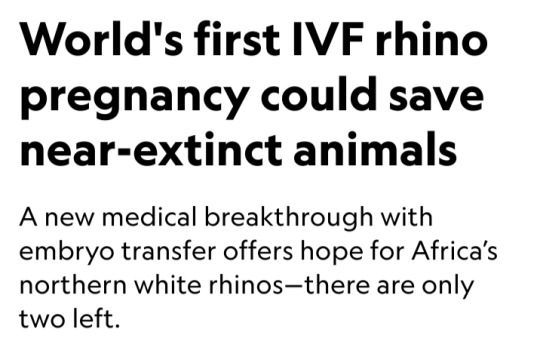
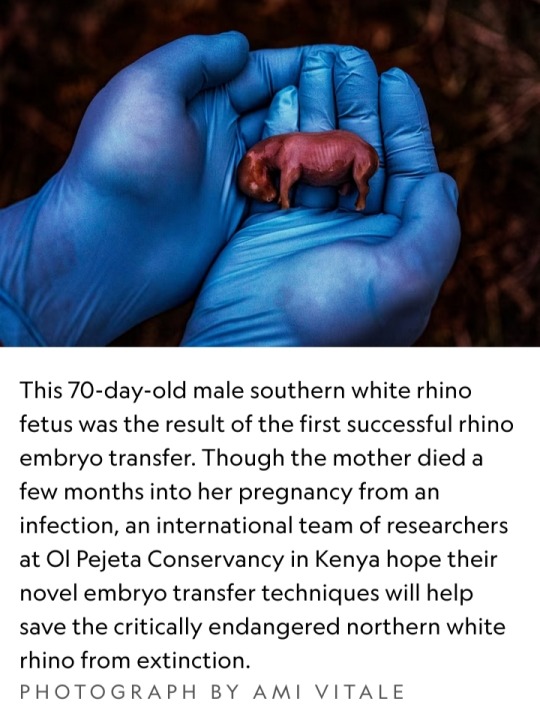
By Dina Fine Maron
January 24, 2024
Scientists have cleared a significant hurdle in the years-long effort to save Africa’s northern white rhinoceros from extinction with the first-ever rhino pregnancy using in vitro fertilization.
The lab-assisted pregnancy, which researchers will announce today, involved implanting a southern white rhino embryo in a surrogate mother named Curra.
The advance provides the essential “proof of concept” that this strategy could help other rhinos, says Jan Stejskal of the BioRescue project, the international group of scientists leading this research.
Curra died just a couple months into her 16-month pregnancy from an unrelated bacterial infection, Stejskal says.
However, the successful embryo transfer and early stages of pregnancy pave the way for next applying the technique to the critically endangered northern white rhino.
The process was documented exclusively by National Geographic for an upcoming Explorer special currently slated to air in 2025 on Nat Geo and Disney+.
BioRescue expects to soon implant a northern white rhino embryo into a southern white rhino surrogate mother.
The two subspecies are similar enough, according to the researchers, that the embryo will be likely to develop.
Eventually, this approach may also help other critically endangered rhinos, including the Asian Javan rhinoceros and the Sumatran rhinoceros, which each now number under 100 individuals, Stejskal says.
But the northern white rhino’s current situation is the most pressing by far.
There are no males left, and the only two remaining animals are both elderly females that live under armed guard on a reserve in a 700-acre enclosure in Kenya called Ol Pejeta Conservancy.
The boxy-jawed animals once roamed across central Africa, but in recent decades, their numbers have plummeted due to the overwhelming international demand for their horn, a substance used for unproved medicinal applications and carvings.
Made from the same substance as fingernails, rhino horn is in demand from all species, yet the northern white rhino has been particularly hard-hit.
"These rhinos look prehistoric, and they had survived for millions of years, but they couldn’t survive us,” says Ami Vitale, a National Geographic Explorer and photographer who has been documenting scientists’ efforts to help the animals since 2009.
“If there is some hope of recovery within the northern white rhino gene pool — even though it’s a substantially smaller sample of what there was — we haven’t lost them,” says conservation ecologist David Balfour, who chairs the International Union for the Conservation of Nature’s African rhino specialist group.
Blueprints for rhino babies

To stave off the animal’s disappearance, BioRescue has used preserved sperm from northern white rhinos and eggs removed from the younger of the two remaining females.
So far, they’ve created about 30 preserved embryos, says Thomas Hildebrandt, the head scientist of BioRescue and an expert in wildlife reproduction based at the Leibniz-Institute of Zoo and Wildlife Research in Berlin.
Eventually, the team plans to reintroduce northern white rhinos into the wild within their range countries.
“That’d be fantastic, but really, really far from now—decades from now,” says Stejskal.
Worldwide, there are five species of rhinoceros, and many are in trouble.
Across all of Africa, there are now only about 23,000 of the animals, and almost 17,000 of them are southern whites.
Then there are more than 6,000 black rhinos, which are slightly smaller animals whose three subspecies are critically endangered.
In Asia, beyond the critically endangered Javan and Sumatran rhinos, there’s also the greater one-horned rhino, whose numbers are increasing and currently are estimated to be around 2,000.
The BioRescue effort has experienced many setbacks, and even though the team now has frozen embryos, the clock is ticking.
The researchers intend to use southern white rhinos as surrogate moms for the northern white rhino embryos.
However, scientists want any northern white rhino calves to meet and learn from others of their kind, which means they need to be born before the two remaining females die.
“These animals learn behaviors — they don’t have them genetically hard-wired,” says Balfour, who’s not involved with the BioRescue work.
But birthing new animals in time will be a challenge.
“We’re really skating on the edge of what’s possible,” he says, “but it’s worth trying.”
Najin, the older female, will be 35 this year, and Fatu will be 24.
The animals, which were born in a zoo in the Czech Republic, are expected to live to about 40, says Stejskal, who also serves as director of international projects at the Safari Park Dvůr Králové, the zoo where the animals lived until they were brought to Kenya in 2009.
Impregnating a rhino

The next phase of BioRescue’s plan involves implanting one of their limited number of northern white rhino embryos into a southern white rhino surrogate mother — which the group plans to do within the next six months, Stejskal says.
They’ve identified the next surrogate mother and set up precautions to protect her from bacterial infections, including a new enclosure and protocols about disinfecting workers’ boots.
But now, they must wait until the female rhino is in estrus — the period when the animal is ready to mate — to implant the egg.
To identify that prime fertile time, they can’t readily perform regular ultrasounds at the conservancy as they might do in a zoo.
Instead, they have enlisted a rhino bull that has been sterilized to act as a “teaser” for the female, Hildebrandt says, adding that they must wait a few months to make sure that their recently sterilized male is truly free of residual sperm.
Once the animals are brought together, their couplings will alert conservancy staff that the timing is right for reproductive success.
The sex act is also important because it sets off an essential chain of events in the female’s body that boosts the chances of success when they surgically implant the embryo about a week later.
"There’s little chance the conservancy staff will miss the act. White rhinos typically mate for 90 minutes," Hildebrandt says.
What’s more, while mounted on the females, the males often use their temporary height to reach tasty plant snacks that are generally out of reach.
Boosting genetic diversity
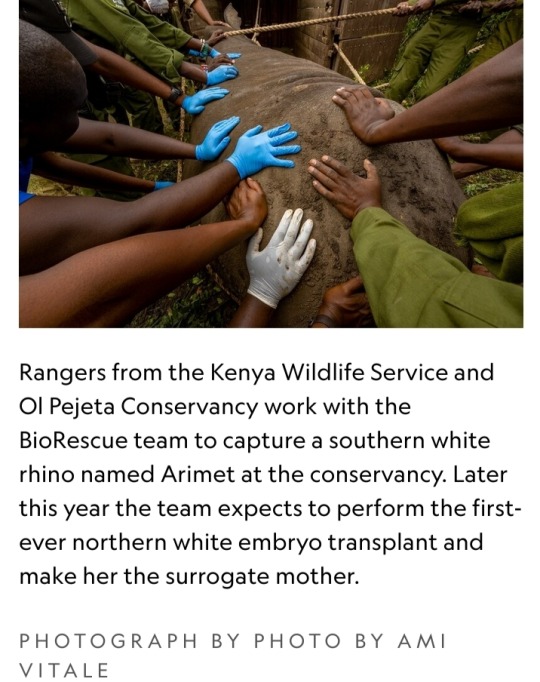
With so few northern white rhinos left, their genetic viability may seem uncertain.
But the BioRescue team points to southern white rhinos, whose numbers likely dropped to less than 100, and perhaps even as few as 20, due to hunting in the late 1800s.
Government protections and intense conservation strategies allowed them to bounce back, and now there are almost 17,000.
“They have sufficient diversity to cope with a wide range of conditions,” says Balfour.
Researchers don’t know exactly how many southern white rhinos existed a century ago, he says, but it’s clear that the animals came back from an incredibly low population count and that they now appear healthy.
Beyond their small collection of embryos, the BioRescue team hopes to expand the northern white rhino’s gene pool by drawing from an unconventional source — skin cells extracted from preserved tissue samples that are currently stored at zoos.
They aim to use stem cell techniques to reengineer those cells and develop them into sex cells, building off similar work in lab mice.
According to their plan, those lab-engineered sex cells would then be combined with natural sperm and eggs to make embryos, and from there, the embryos would be implanted into southern white rhino surrogate mothers.
Such stem cell reprogramming work has previously led to healthy offspring in lab mice, Hildebrandt says, but rhinos aren’t as well-studied and understood as mice, making this work significantly challenging.
A global effort
The northern white rhino revitalization venture has cost millions of dollars, supported by a range of public and private donors, including the German Federal Ministry of Education and Research.
Other partners on the effort include the Leibniz Institute for Zoo and Wildlife Research, the Czech Republic’s Safari Park, Kenya Wildlife Service, Ol Pejeta Conservancy, and also Katsuhiko Hayashi, a professor of genome biology at Osaka University in Japan who conducted the mouse stem cell research.
Building upon Hayashi’s stem cell techniques could ultimately bring the northern white rhino gene pool up to 12 animals — including eggs from eight females and the semen of four bulls, according to Stejskal.
An alternative approach to making more babies, like crossbreeding northern and southern white rhinos, would mean the resulting calves wouldn’t be genetically pure northern white rhinos, Hildebrandt notes.
The two subspecies look quite similar, but the northern version has subtle physical differences, including hairier ears and feet that are better suited to its swampy habitat.
The two animals also have different genes that may provide disease resiliency or other benefits, Hildebrandt says.
There are unknown potential differences in behavior and ecological impact when populating the area with southern white rhinos or cross-bred animals.
"The northern white rhino is on the brink of extinction really only due to human greed,” Stejskal says.
“We are in a situation where saving them is at our fingertips, so I think we have a responsibility to try.”

🩶🦏🩶
#northern white rhinoceros#rhino embryo transfer#in vitro fertilization#IVF#southern white rhinoceros#critically endangered animals#National Geographic#BioRescue#rhino horn#International Union for the Conservation of Nature#African rhino specialist group#Thomas Hildebrandt#German Federal Ministry of Education and Research#Leibniz Institute for Zoo and Wildlife Research#Kenya Wildlife Service#Ol Pejeta Conservancy#Katsuhiko Hayashi#genome biology#IVF rhino pregnancy
10 notes
·
View notes
Text






























Save The Rhino Day
Save the Rhino Day, celebrated globally on May 1, is a day centered around raising awareness of the rhino’s plight in the world, and highlighting ways to help this incredible animal. This day is especially important given the current devastating statistics — on average, one rhino is poached somewhere in the world every 22 hours. On this day, various animal rights organizations, non-profit companies, zoos, animal activists, and other concerned groups provide opportunities to encourage more rhino conservation efforts from people around the world.
History of Save The Rhino Day
To trace the origins of the Rhinoceros, we’d have to go back some millennia — almost 56 million years ago, to be precise. That’s when the first ancestors of the modern Rhinos roamed the planet. They were more horse-like in structure and had no horns. Old rhino bones found from this period in North America show a gradual evolution from this old horse-like structure into one more aligned with today’s rhino. Over these years, there were three distinct species that scientists think might be the ancestors of today’s rhinos. One of these was called the ‘running rhino,’ which was adapted for speed.
Another was more aquatic and resembled today’s hippopotamus. The last, most direct ancestors to the modern rhinoceros appeared approximately 25 million years ago and had multiple sub-species in their families. Of these, the wooly rhinoceros was one of the largest subspecies, weighing in at almost four times the size of the average African elephant, and boasting one-meter-long horns. This species inhabited a large area, from Siberia to the British Isles. These plant-eaters lived alongside the wooly mammoths, and have been found fossilized in ice and in cave paintings made during that period.
These rhinos only lived in Asia initially but began traveling to other places around 25 million years ago. Over time, these rhino ancestors roamed the continents, primarily living in Eurasia (Europe and Asia combined) and North America. However, the American rhinos went extinct sometime between 5.4 and 2.4 million years ago.
Rhinos have also featured in many Asian and African legends — they are the fire-stamping heroes in many stories from Burma, India, and Malaysia. According to these stories, rhinos appeared every time a fire was lit in the forest and would stamp out the flames. So popular is this tale that it even featured in a popular 1980 South-African movie named “The Gods Must Be Crazy.”
Unfortunately, these once-abundant creatures have lost out to human activity. Hunting, and now, poaching and habitat loss, have drastically reduced the number of rhinos across the world. Rhino horns are also integral to traditional medicine in many parts of Asia, with people believing it has mystical powers. Since 2007, there has been a sharp increase in poaching activity and illegal trade of rhino horns, to the extent that many subspecies of rhinos have been declared extinct and the entire rhino population is listed as ‘endangered’.
Save The Rhino Day timeline
1973
A Symbol of Queer Identity
Two Boston artists, Daniel Thaxton and Bernie Toale create a lavender rhinoceros as a symbol to increase awareness of gays and lesbians and put it in a series of subway posters.
2011
No More Black Rhinos
The Western Black Rhino — which used to live in Cameroon, Chad, the Central African Republic, Sudan, and South Sudan — is declared extinct because of excessive poaching.
2012
A Ray of Hope
For the very first time, a Sumatran rhino — the smallest of the rhino family — is born in captivity in the Sumatran Rhino Sanctuary in Indonesia; this miracle repeats in 2016, and then in 2022.
2018
A Sad Farewell
The world bids goodbye to the last known male northern white rhino; only two females survive to this day.
Save The Rhino Day FAQs
What day is World Rhino Day?
On September 22 each year, the global community celebrates the rhinoceros and explains what people can do to help them.
How many rhino species are there?
At present, there are five species of rhinos in the world — the white rhino and the black rhino (both found in Africa), and the Indian, Javan, and Sumatran (all found in Asia).
Are rhinos endangered?
The black, Javan, and Sumatran rhinos are still listed as ‘critically endangered,’ while the entire species is classified as ‘endangered.’
How to Observe Save The Rhino Day
Learn about the rhinoceros: Uncover more interesting information about this magnificent animal. Watch documentaries featuring the rhino, read books and other literature about them, and discover more studies and research that show just how the rhino lives.
Visit a rhino: Why not go see a rhinoceros in real life? Check out rhinos at a local zoo or plan a trip to visit rhinos in the wild.
Help save the rhino: Research the efforts various groups make towards saving the rhino, and check out what you can do to help. These could include online volunteering services, donations of funds, and more.
5 Fun Facts About The Rhinoceros
The rhino communication method: Rhinos make funny sounds — like snorting, sneeze-like sounds, and even honking — and use their bodily waste to 'speak' to other rhinos.
They don't have 20-20 vision: Rhino eyesight is notoriously poor, so much so that if an animal only 100 feet away — in an open space, too — stood motionless, the rhino wouldn't be able to spot them.
How the white rhino got its name: This rhino isn't actually white — English explorers mistook the Afrikaans 'wyd,' which refers to the huge girth of this animal, as 'white' and the name stuck.
Their horns are like our nails: Rhino horns are made up almost entirely of keratin, which is also the protein found in human hair and nails.
And still, people steal their horns: Even as rhino horns are proven to have no health benefits, signs in museums — like the National Museum of Scotland — notify visitors that the horn on display is a replica, as the real one has been stolen.
Why Save The Rhino Day is Important
It helps increase awareness: Rhinos are becoming increasingly rare in the wild, and only continuous efforts to raise awareness, like celebrating Save The Rhino Day, can help this endangered species. Do your bit today to support rhinos.
Creating safe havens for rhinos: The spike in awareness such days provide also subsequently raises the amount of help being offered to save the rhinos. These increased efforts could help secure various safe and protected spaces for the rhino to survive and thrive.
Building a rhino-loving community: Conservation efforts have had a significant impact in the past — various subspecies of rhinos have seen their numbers gradually increase over the years as a result of these activities. After these celebrations, we are left with a passionate and motivated global community that wants to see the rhinoceros flourish in the decades to come.
Source
#Southern white rhinoceros#Grévy's zebra#Lewa Savanne#indoors#outdoors#summer 2023#Zoo Zürich#day trip#animal#travel#original photography#tourist attraction#landmark#cityscape#architecture#landscape#Zurich#Schweiz#Switzerland#Save The Rhino Day#SaveTheRhinocerosDay#SaveTheRhinoDay#1 May
4 notes
·
View notes
Text
[ID: edited picture of animals that exist today and their extinct counterpart side by side in nature for size comparison, all of their extinct counterparts are usually way larger than the modern animals. the animals are in order: the modern sumatran orangutan (pongo abelli) and the extinct gigantopithecus (gigantopithecus black), the modern african bush elephant (loxodonta africana) and the extinct asian straight-tusked elephant (palaeoloxodon namadicus), the modern great white shark (carcharodon carcharias) and the extint megalodon (otodus megalodon), the modern northern hairy-nosed wombat (lasiorhinus krefftii) and the extinct diprotodon (diprotodon optaum), the modern linnaeus two-toed sloth (choloepus didactylus) and the extinct ground sloth (megatherium americanum), the modern clouded leopard (neofelis nebulosa) and the extinct sabertoothed cat (smilodon populator), the modern spectacled bear (tremarctus ornatus) and the extinct pleistocene south american short-faced bear (arctotherium angustidens), the modern sumatran rhinoceros (dicerorhinus sumatrensis) and the extinct woolly rhinoceros (coelodonta antiquitatis), the modern giant armadillo (priodontes maximus) and the extinct glyptodon (glyptodon), the modern indri or babakoto (indri indri) and the extinct giant lemur (archaeoindris fontoynontii), the modern white rhinoceros (ceratotherium simum) and the extinct paraceratherium (paraceratherium transouralicum), the modern great spotted kiwi (apteryx haastii) and the extinct south island giant moa (dinornis robustus). end ID]
Illustrations Show Size Difference Between Prehistoric Animals and Modern Descendants
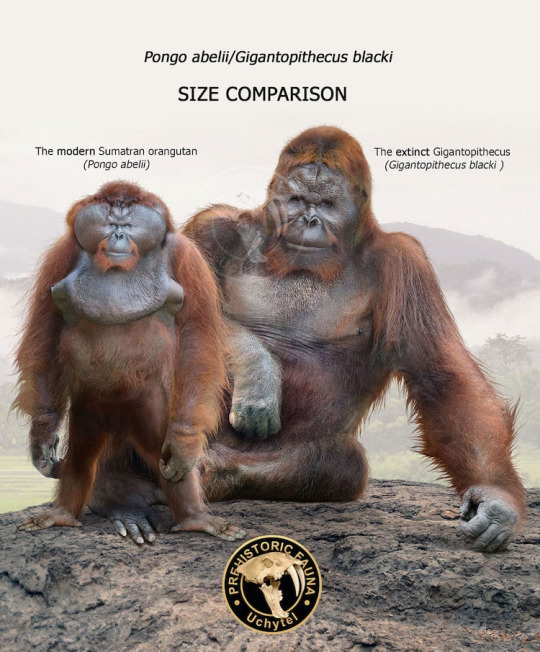
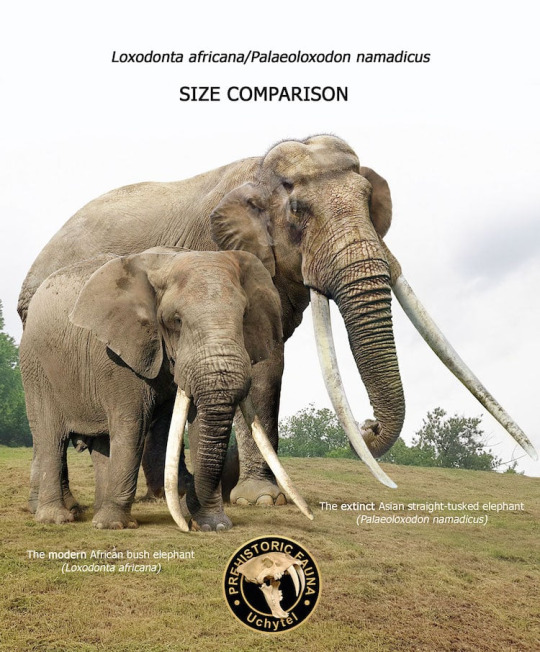
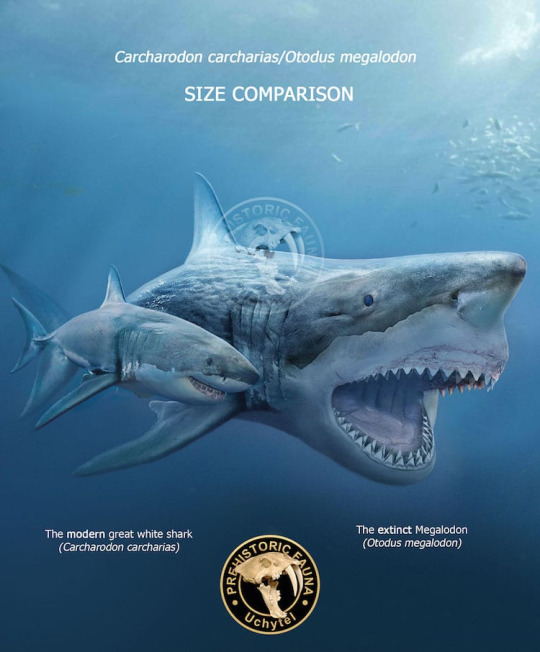
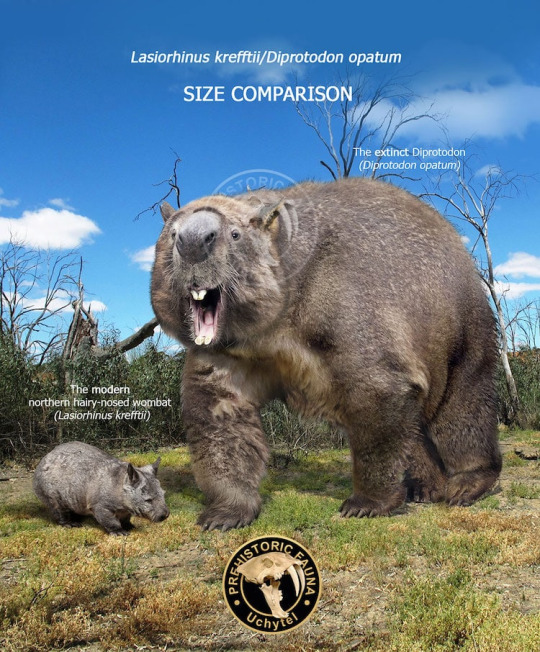
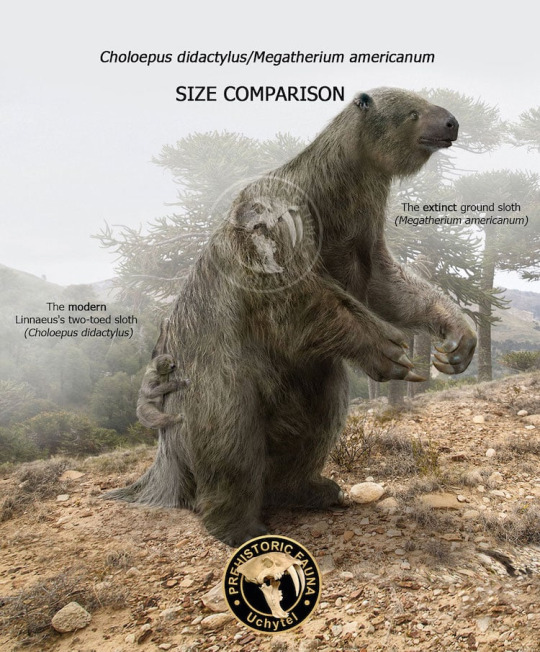
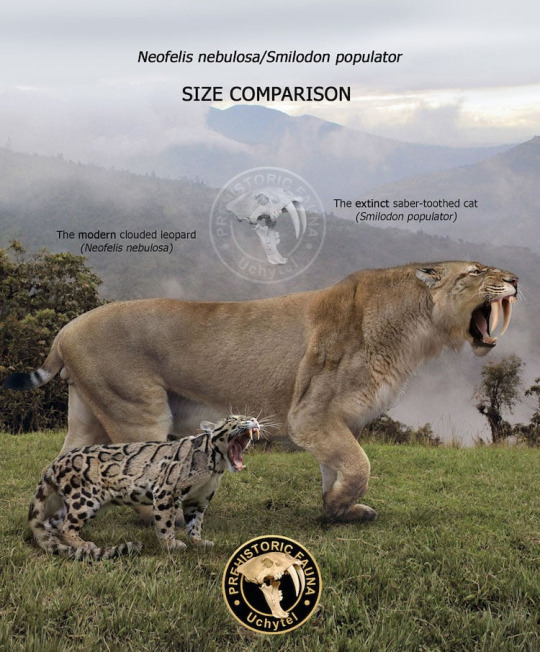
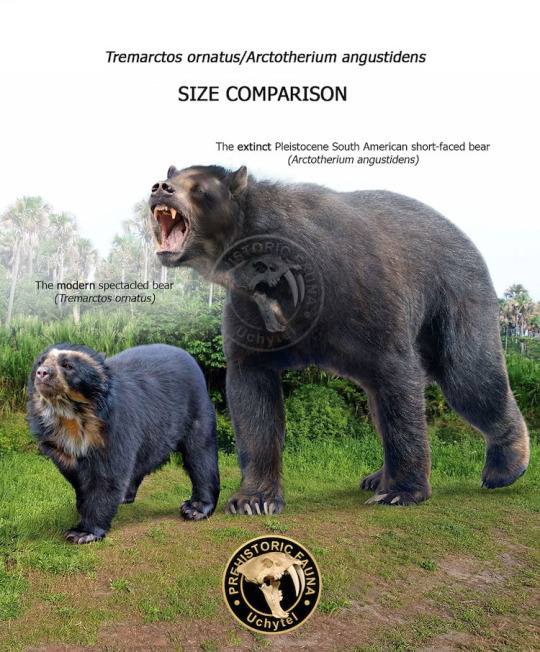
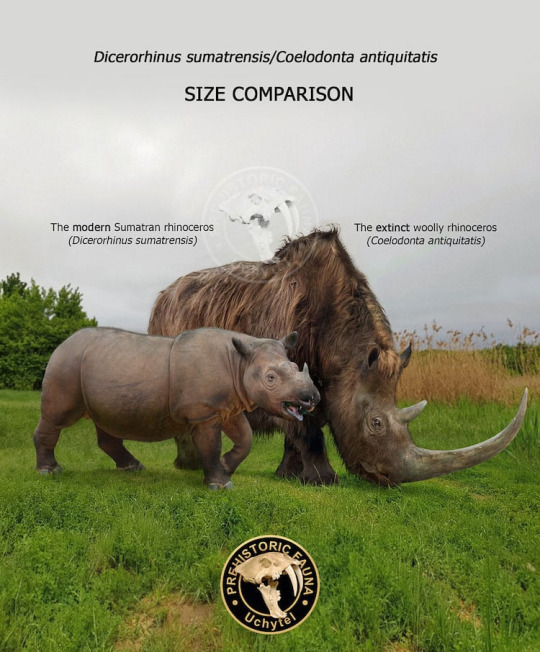
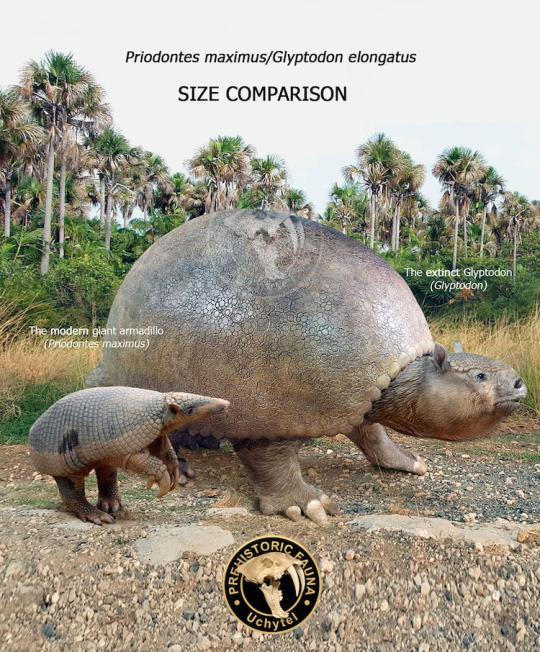
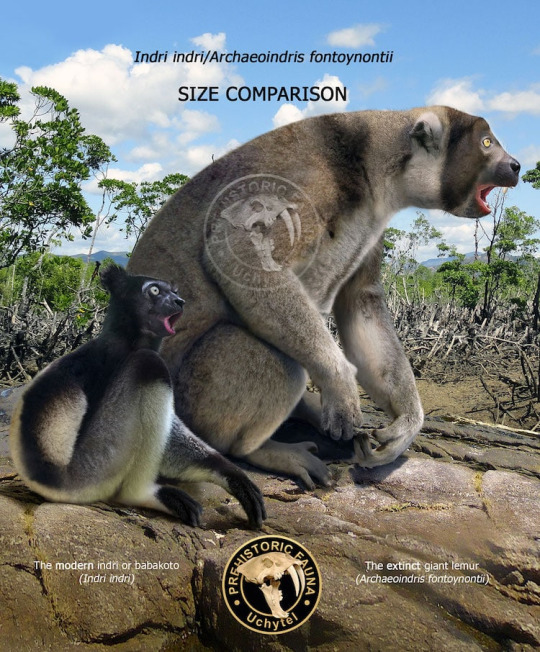
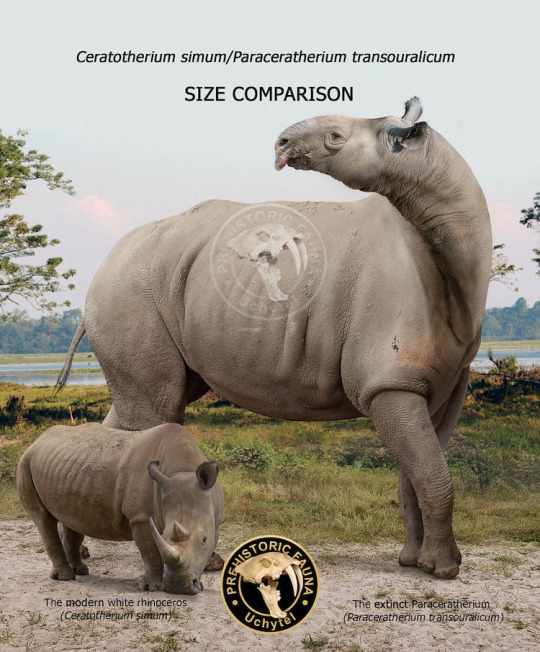
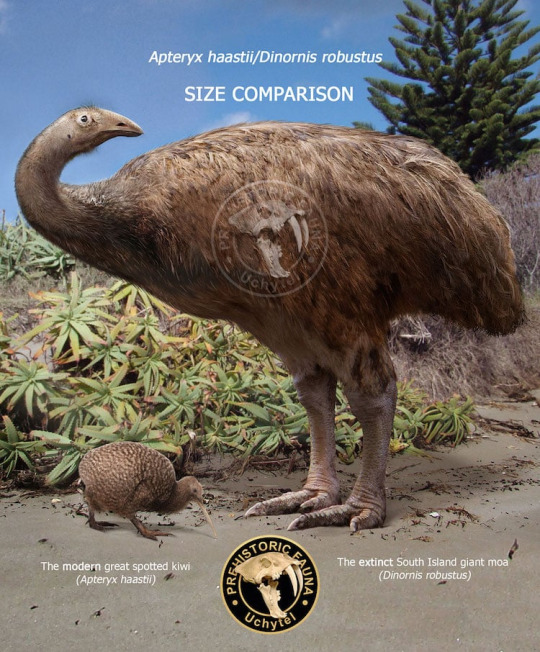
92K notes
·
View notes
Text

Instagram Store
Northern Sumatran Rhinoceros.
When I approach to illustrate an animal I usually feel that I'm not in the right direction. Just after about an hour, I begin to see its shape. I always start with the head because is the hardest to resolve and is the one that takes me the longest to do.
The Northern Rhinoceros was the most widespread of all Sumatran rhinos. It was once found in the Indochinese peninsula, eastern India, Bhutan, Bangladesh, Mongolia, and China. It has been declared extinct multiple times and there is little hope that there is a small population surviving in Burna and the Malaysian peninsula but the chances are very low.
_______________________________________________
References: Sumatran_rhinoceros Photo Credit: Rasmus Worsøe Havmøller _______________________________________________
Thank you guys. If you like the content please follow my blog. A like, reblog, or comment is very much appreciated too.
#Northern Sumatran Rhinoceros#sumatran rhino#woolly rhinoceros#rhinoceros#rhino#animal#mammals#illustration#drawing#scientific illustration#illo#wild animals#wildlife#artist on tumblr#animals#rhinoconservation#recently extinct#extinction#mamiferos#rinoceronte#rinoceronte de sumatra
35 notes
·
View notes
Text
Cheetahs are back, but what all animal species are extinct in India?
Cheetahs are back, but what all animal species are extinct in India?
Animal species extinct in India: Today, 17th September 2022, eight Namibian Cheetahs are being translocated to Kuno National park. Hence, Cheetahs are coming back to India land almost 70 years after their extinction. This is the first step in the much ambitious “Project Cheetah”. According to news agency PTI, there is a possibility that next month India will have another batch of 12 South…

View On WordPress
#A Miracle#cheetah project#Extinct animals#extinct animals India#Himalayan Quail#Indian aurochs#Indian Javan Rhinoceros#Northern Sumatran rhinoceros#Pink-headed duck
1 note
·
View note
Photo









“The End” - Charcoal Series by Peter Matthews, November 2017
“I was compelled to produce this charcoal wildlife series that highlights the plight of some of the most endangered species in the world - wildlife on the point of extinction, with man ultimately being responsible as the cause.”
Via Peter Matthews Art
#critically endangered#environmental impact#sumatran tiger#cross river gorilla#philippine eagle#chinese alligator#amur leopard#vaquita#sportive lemur#Northern White Rhinoceros
246 notes
·
View notes
Text

(So burnt out; I absolutely had to take a break to draw today. Thankfully this semester is ending soon /)(\)
Anyway, here’s Coelodonta antiquitatus, commonly known as the Woolly Rhinoceros! Living in Northern Eurasia during the late Pleistocene (ice age), these rhinos were adapted for harsh, cold environments, sporting thick skin, double-coated fur, short ears, and a large fatty hump. They were about the same size as the white rhinoceros, though their closest living relative is the Sumatran rhinoceros.
Acording to cave art, their coloration and horn size/shape varied between individuals. Some had a dark band around their midsection, while others had a saddle-shaped patch. Frozen specimens show that their fur coat was reddish-brown. The coloration on this one was based on the darkest variety displayed in the Chauvet Cave paintings.
#my art#saritadrawspalaeo#Coelodonta antiquitatus#Coelodonta#Woolly Rhinoceros#mammals#therapsids#synapsids
13 notes
·
View notes
Text
Anyone else enjoy the fun debates around 2012, when historians and paleontologists were arguing about whether or not Pleistocene megafauna like Paleoloxodon ("Ice Age” straight-tusked elephants) might’ve survived in Bronze Age environments of ancient China as recently as the Zhou era, about 3000 years ago?





Woolly mammoths still lived in isolated locations until at least 3600 years ago. So, could Paleoloxodon survive into the Bronze Age of China? Short answer: Probably not. In continental “Europe,” many Paleoloxodon disappeared 35,000 years ago, before the end of the Pleistocene; even woolly mammoths long out-lived them. But Paleoloxodon cypriotes, an endemic species, survived on the island of Cyprus until at least 11,000 years ago. This was a big deal and there were many tangents of the disk horse, but basically, the still-living Asian elephant is well-known to have definitely inhabited most of temperate China in recent millennia, still living as far north as modern-day Beijing, the Yellow River, and the southern edge of the Gobi during the Warring States period. As imperial states strengthened their power and employed irrigation, devegetation, and other geoengineering schemes to remake the landscape of China and the avoid the damage of dramatic annual floods, creatures like Asian elephant, tiger, and rhinoceros were pushed out of the Yellow and Yangtze river systems, pushed further and further south, hence historian Mark Elvin’s famous phrase describing Chinese environmental history as “the retreat of the elephants.”
But Shang Dynasty and Zhou-era artwork shows one-horned rhinoceros (proclaimed by some to possibly invoke folk memory of Pleistocene Elasmotherium, but this is very unlikely and is easier to debunk). More seriously, this early art also shows elephants with two-fingered trunks. The Asian elephant, though definitely present in the region at the time, doesn’t have two-fingered trunks. Therefore, historians have proposed:
(1) The art simply depicts a stylized Asian elephant (Elephas maximus), and liberties were taken with anatomical accuracy. (2) The art depicts a species of Paleoloxodon (now-extinct straight-tusked elephants) which may have survived during the Neolithic in northern China. At the time, woolly mammoths still survived on Wrangell Island. Or (3) the art depicts African elephant (Loxodonta africana), which does have two-fingered trunks. This may seem far-fetched (how did Zhou-era China become familiar with African elephants?), but art and ivory from Ur, Mesopotamia, and other Near Eastern sites suggests that there may have been exchange of African elephant ivory, artwork. or knowledge of African elephants, an exchange between Egypt/North Africa and Media/Persia/Central Asia.
Here’s where Asian elephants lived historically (within the past 5500-ish years).

Here’s the historical distribution of Asian elephants in China, and the “retreat of the elephants” over time:

This was the paper that sparked the debate:

And wanna point out: Even though most people disagree (Paleoloxodon was probably extinct long before the Zhou era), there absolutely were “wild elephants” living 3000 years ago in North China, and they were the modern Asian elephant. But. It’s at least possible that there was more than one elephant creature in Bronze Age northern China; the Asian elephant could’ve lived alongside Paloeloxodon. But a lot of “elephant scientists” disagree.
Did residents of Central Asia and Media/Persia, in the Neolithic and Bronze Age, have knowledge of African elephants?
It seems very likely that Asian elephants, the same species present throughout China and the Indian subcontinent, had, in the ancient era, lived along the coast of the Arabian Sea and southern Persia, as far as the northern edge of Mesopotamia and possibly into Assyria. So, if there were already Asian elephants present in ancient Mesopotamia and Assyria, why would these people be trafficking in African elephant art and ivory? Would knowledge of African elephants really be relayed from Egypt and shared with China?
Went looking for old notes that I sent to myself, via email, and for some reason this one showed up in search results for “Neolithic elephants.”

???
But at the bottom of the email, I guess I had taken these notes.

Excerpts:


And here’s the magical key excerpt:

“Perhaps, [there was] a population of African elephants which had naturally and historically inhabited the Arabian mountains -- this is not so farfetched, given that African lion, ostriches, and leopards inhabited the same coastal mountain range along the Red Sea.”
Yep, this could be true. Thus, there would’ve been Asian elephants in Mesopotamia, and African elephants on the other side of the deserts, in Arabia.
Once again, here is the early Fertile Crescent as a meeting-place between “African” and “Asian” biodiversity: Asian elephants living in Mesopotamia, with local populations of African elephant nearby in North Africa.
Would African elephant knowledge have been shared between Egypt and Mesopotamia/Assyria, before being passed along to the Indus and China?
Who knows?
Anyway, here’s a similar “retreat of the rhinos” in China (the local extinction of rhinoceros in China, over time; this species is still alive, and today is known as the Sumatran rhino). Shitty labels by me:

20 notes
·
View notes
Text

It's September 22nd, 🦏 World Rhino Day – an opportunity for conservation organizations, non-government organizations (NGOs), zoos, and all of us to celebrate the magnificent rhinoceros. Rhinos once roamed throughout Europe, Asia, and Africa and were known to early Europeans who depicted them in cave paintings. At the beginning of the 20th century, 500,000 rhinos roamed the planet. By 1970, however, their numbers had dropped to 70,000, and today, there are only about 28,000 left. The five surviving species of rhino are the Black and White Rhinos in Africa, and the Javan, Sumatran, and Indian (or Greater One-horned) Rhinos in Asia. Due to persistent poaching and habitat loss, very few rhinos of any of these species currently survive outside of national parks and reserves. According to the latest figures from the International Union for Conservation of Nature (IUCN), the Black, Javan, Sumatran, and Northern Black Rhino (subspecies of the Black Rhino) are all Critically Endangered, the Southern White Rhino is in Near Threatened status, and the Indian Rhino is Vulnerable.
The root cause of rhino poaching is the use of their horns in traditional medicines and as dagger handles. Please, let's all do what we can to help curb the demand for rhino horn and protect our remaining animals so future generations can enjoy and admire these noble creatures as much as we do. ☮️ Peace… Jamiese of Pixoplanet
#jamiese#pixoplanet#rhinoday#world rhino day#rhino#rhinoceros#save the rhino#wildlife photography#wildlife#africa#save rhinoceros#rhino conservation#safari#save rhinos#endangered species#rhinos#biodiversity#rhino love#wildlife conservation#wildlife photographer#conservation#save the rhinos#kruger national park#save the rhino day#safari photography#african wildlife#sumatran rhino#animal conservation#wild africa#black rhino
1 note
·
View note
Text
the signs as animals
arist: south african cheetah
aries: american black bear
argo: kordofan giraffe
arga: griffon vulture
arittanius: wildebeest
arittarius: yak
arpio: bowhead whale
arpia: african elephant
arlo: horse
aro: barn owl
ara: tiger
arza: white rhinoceros
aricorn: spider monkey
ariborn: ring-tailed lemur
arnius: tabby cat
arius: megabat
asci: rock dove
asces: pied crow
armino: lion
armini: eurasian wolf
arcer: gerbil
arcen: newt
arus: bush-tailed porcupine
arun: philippine forest rat
taurrist: asiatic cheetah
taurries: asian black bear
taurgo: nubian giraffe
taurga: cinereous vulture
taurittanius: roan
taurittarius: southern marsupial mole
taurpio: right whale
taurpia: asian elephant
taurlo: sea eagle
tauro: grass owl
taurra: sheep
taurza: sumatran rhinoceros
tauricorn: vervet monkey
tauriborn: aye-aye
taurnius: jungle cat
taurrius: flying fox
taursci: trocaz pigeon
taursces: american crow
taurmino: kit fox
taurmini: tundra wolf
taurcer: guinea pig
taurcen: seal
taurus: crested porcupine
taurun: nile rat
gemrist: north american cougar
gemries: atlas bear
gemgo: west african giraffe
gemga: white-rumped vulture
gemittanius: waterbuck
gemittarius: northern marsupial mole
gempio: blue whale
gempia: blue-ringed octopus
gemlo: snake-eagle
gemo: sooty owl
gemra: argali
gemza: black rhinoceros
gemicorn: proboscis monkey
gemiborn: sifaka
gemnius: european wildcat
gemrius: egyptian fruit bat
gemsci: laurel pigeon
gemsces: cape crow
gemmino: red fox
gemini: arabian wolf
gemcer: dove
gemcen: house mouse
gemus: long-tailed porcupine
gemun: moluccan prehensile-tailed rat
canrist: florida panther
canries: blue bear
cango: reticulated giraffe
canga: black vulture
canittanius: eland
canittarius: golden mole
canpio: bryde’s whale
canpia: dumbo octopus
canlo: black-chested buzzard-eagle
cano: itombwe owl
canra: mouflon
canza: indian rhinoceros
canicorn: pygmy marmoset
caniborn: mouse lemur
canius: black-footed cat
canrius: california leaf-nosed bat
cansci: hill pigeon
cansces: hooded crow
canmino: cape fox
canmini: steppe wolf
cancer: humming bird
cancen: mayor’s moue
canus: bristle-spined rat
canun: bulldog rat
lerist: african leopard
leries: eurasian brown bear
lego: angolan giraffe
lega: turkey vulture
leittanius: gerenuk
leittarius: eurasian beaver
lepio: fin whale
lepia: mimic octopus
lelo: black solitary eagle
leo: bay owl
lera: urial
leza: nile hippopotamus
leicorn: rhesus macaque
leiborn: cockatiel
lenius: sand cat
lerius: hondurian white bat
lesci: snow pigeon
lesces: somali crow
lemino: arctic fox
lemini: mongolian wolf
lecer: flying squirrel
lecen: sikkim mouse
leus: prehensile-tailed porcupine
leun: kerala rat
virrist: javan leopard
virries: eurasian brown bear
virgo: south african giraffe
virga: california condor
virittanius: steenbok
virittarius: north american beaver
virpio: see whale
virpia: blanket octopus
virlo: crested eagle
viro: scops owl
virra: bighorn sheep
virza: east african hippopotamus
viricorn: gibbon
viriborn: parrotlet
virnius: chinese mountain cat
virrius: big brown cat
virsci: specled pigeon
virsces: flores crow
virmino: fennec fox
virmini: dingo
vircer: unstriped ground squirrel
vircen: volcano mouse
virus: electric eel
virun: himilayan field rat
librist: northern goshawk
libries: grizzly bear
libgo: masai giraffe
libga: greater flamingo
libittanius: nyala
libittarius: star-nosed mole
lipio: chilean dolphin
lipia: coconut octopus
liblo: harpy eagle
libo: screech owl
libra: thinhorn sheep
libza: cape hippopotamus
libicorn: bornean orangutan
libiborn: caique
libnius: amazon weasel
librius: dwarf epaulettes fruit bat
libsci: wood pigeon
libsces: bismark crow
limino: grey fox
limini: dog
libcer: indian palm squirrel
libcen: indian field mouse
libus: hog-nosed skunk
libun: sunburned rat
scorrist: gray-bellied hawk
scorries: east siberian brown bear
scorgo: thornicroft’s giraffe
scorga: lesser flamingo
scorittanius: klipspringer
scorittarius: hairy-tailed mole
scorpio: arabian dolphin
scorpia: giant squid
scorlo: papuan eagle
scoro: snowy owl
scorra: snow sheep
scorza: west african hippopotamus
scoricorn: sumatran orangutan
scoriborn: lorikeet
scornius: mountain weasel
scorrius: split-nosed bat
scorsci: comoros olive pigeon
scorsces: white-necked crow
scormino: swift fox
scormini: tibetan wolf
scorcer: eastern grey squirrel
scorcen: ryukyu mouse
scorus: hooded skunk
scorun: aceh rat
sagirist: red-chested goshawk
sagiries: syrian brown bear
sagigo: pig
sagiga: chilean flamingo
sagiittanius: kudu
sagiittarius: eastern mole
sagipio: long-beaked dolphin
sagipia: colossal squid
sagilo: balck eagle
sagio: great horned owl
sagira: red kangaroo
sagiza: angola hippopotamus
sagiicorn: tapanuli orangutan
sagiiborn: parakeet
saginius: steppe polecat
sagirius: brown long-eared bat
sagisci: white-naped pigeon
sagisces: jungle crow
sagimino: plains bison
sagimini: japanese wolf
sagicer: colorado chipmunk
sagicen: cook’s mouse
sagius: striped skunk
sagiun: snake
capririst: besra
capriries: giant panda
caprigo: chicken
capriga: jame’s flamingo
capriittanius: lechwe
capriittarius: gansu mole
capripio: killer whale
capripia: humboldt squid
caprilo: spotted eagle
caprio: eagle owl
caprira: eastern grey kangaroo
capriza: north american ostrich
capriicorn: eastern gorilla
capriiborn: pianos parrot
caprinius: long-tailed weasel
capririus: mediterranean horseshoe bat
caprisci: stork
caprisces: fish crow
caprimino: wood bison
caprimini: indian wolf
capricer: grey-collard chipmun
capricen: cypriot mouse
caprius: spotted skunk
capriun: spider
aquarist: long-tailed hawk
aquaries: sloth bear
aquago: red junglefowl
aquaga: andean flamingo
aquittanius: springbok
aquittarius: long-tailed mole
aquapio: pilot whale
aquapia: japanese flying squid
aqualo: tawny eagle
aquo: fish owl
aquara: western grey kangaroo
aquaza: masai ostrich
aquicorn: western gorilla
aquiborn: cockatoo
aquanius: yellow-bellied weasel
aquarius: raccoon
aquasci: goose
aquasces: house crow
aquamino: european bison
aquamini: arctic wolf
aquacer: gray-footed chipmunk
aquacen: steppe mouse
aqus: fattail scorpion
aqun: alligator
pirist: chanting goshawk
piries: polar bear
pigo: cow
piga: american flamingo
piittanius: sable antelope
piittarius: japanese shrew mole
pipio: houglass dolphin
pipia: vampire squid
pilo: camel
pio: spotted wood owl
pira: antilopine kangaroo
piza: arabian ostrich
piicorn: chimpanzee
piiborn: conure
pinius: european mink
pirius: koalas
pisci: duck
pisces: palm crow
pimino: water buffalo
pimini: baffin island wolf
picer: uinta chipmunk
picen: meerkat
pius: pandinus
piun: crocodile
#homestuck#zodiac#extended zodiac#the signs as#long post#originality is overrated#i spent way way way way too long on this thing
671 notes
·
View notes
Text

A rhinoceros commonly abbreviated to rhino is a member of any of the five extant species of odd-toed ungulates in the family Rhinocerotidae. Two of the extant species are native to Africa, and three to South and Southeast Asia.

Did you know🦏The five extant species ⁉️
🦏 The white rhinoceros is actually grey. There are two subspecies of white rhinoceros: the southern white rhinoceros (Ceratotherium simum simum) and the northern white rhinoceros (Ceratotherium simum cottoni).
🦏The black rhinoceros has a beak shaped lip and is similar in color to the white rhinoceros. There are four subspecies of black rhino: South-central (Diceros bicornis minor), the most numerous, which once ranged from central Tanzania south through Zambia, Zimbabwe and Mozambique to northern and eastern South Africa; South-western (Diceros bicornis occidentalis) which are better adapted to the arid and semi-arid savannas of Namibia, southern Angola, western Botswana and western South Africa; East African (Diceros bicornis michaeli), primarily in Tanzania; and West African (Diceros bicornis longipes) which was declared extinct in November 2011.
🦏The Indian rhinoceros, or greater one-horned rhinoceros, (Rhinoceros unicornis) has a single horn 20 to 60 cm long. It is nearly as large as the African white rhino. Indian rhinos once inhabited many areas ranging from Pakistan to Myanmar and maybe even parts of China.
🦏The Javan rhinoceros (Rhinoceros sondaicus) is one of the most endangered large mammals in the world. According to 2015 estimates, only about 60 remain, in Java, Indonesia, all in the wild. It is also the least known rhino species.
🦏The Sumatran rhinoceros (Dicerorhinus sumatrensis) is the smallest extant rhinoceros species, as well as the one with the most hair. It can be found at very high altitudes in Borneo and Sumatra. Due to habitat loss and poaching, their numbers have declined and it has become the second most threatened rhinoceros. There are three subspecies of Sumatran rhinoceros: the Sumatran rhinoceros proper (Dicerorhinus sumatrensis sumatrensis), the Bornean rhinoceros (Dicerorhinus sumatrensis harrissoni) and the possibly extinct Northern Sumatran rhinoceros (Dicerorhinus sumatrensis lasiotis).

To learn more please contact us and book your vacation of a lifetime. √ See more 👉 www.kim.tours 🌍 via @kimzebraadventuressafaris #kimzebraadventuressafaris
0 notes
Photo
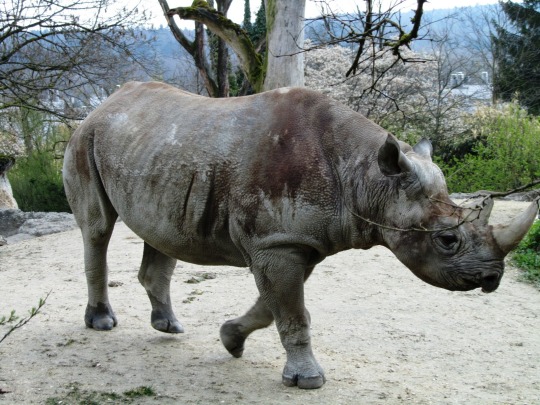
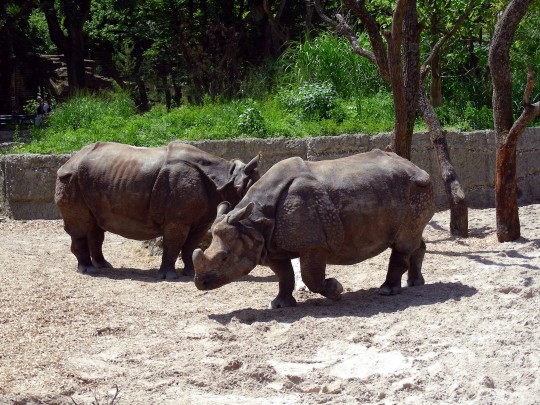




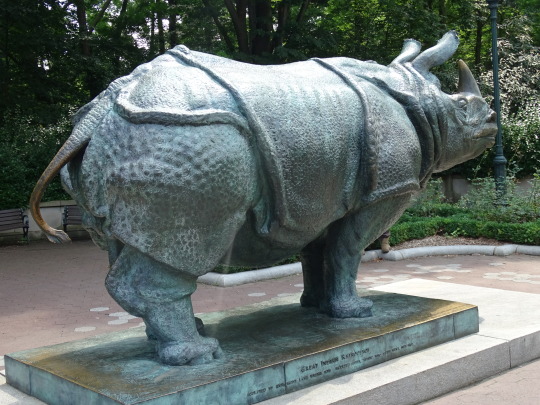
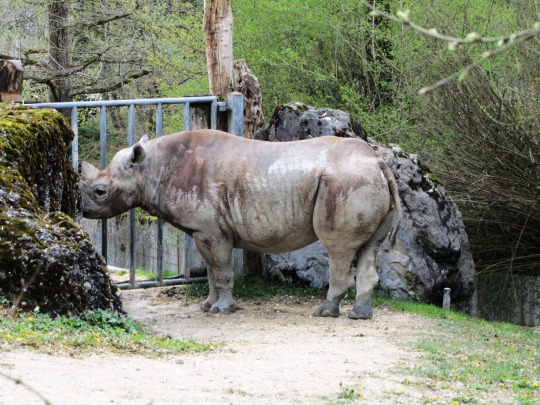


Save The Rhino Day
Save the Rhino Day, celebrated globally on May 1, is a day centered around raising awareness of the rhino’s plight in the world, and highlighting ways to help this incredible animal. This day is especially important given the current devastating statistics — on average, one rhino is poached somewhere in the world every 22 hours. On this day, various animal rights organizations, non-profit companies, zoos, animal activists, and other concerned groups provide opportunities to encourage more rhino conservation efforts from people around the world.
History of Save The Rhino Day
To trace the origins of the Rhinoceros, we’d have to go back some millennia — almost 56 million years ago, to be precise. That’s when the first ancestors of the modern Rhinos roamed the planet. They were more horse-like in structure and had no horns. Old rhino bones found from this period in North America show a gradual evolution from this old horse-like structure into one more aligned with today’s rhino. Over these years, there were three distinct species that scientists think might be the ancestors of today’s rhinos. One of these was called the ‘running rhino,’ which was adapted for speed.
Another was more aquatic and resembled today’s hippopotamus. The last, most direct ancestors to the modern rhinoceros appeared approximately 25 million years ago and had multiple sub-species in their families. Of these, the wooly rhinoceros was one of the largest subspecies, weighing in at almost four times the size of the average African elephant, and boasting one-meter-long horns. This species inhabited a large area, from Siberia to the British Isles. These plant-eaters lived alongside the wooly mammoths, and have been found fossilized in ice and in cave paintings made during that period.
These rhinos only lived in Asia initially but began traveling to other places around 25 million years ago. Over time, these rhino ancestors roamed the continents, primarily living in Eurasia (Europe and Asia combined) and North America. However, the American rhinos went extinct sometime between 5.4 and 2.4 million years ago.
Rhinos have also featured in many Asian and African legends — they are the fire-stamping heroes in many stories from Burma, India, and Malaysia. According to these stories, rhinos appeared every time a fire was lit in the forest and would stamp out the flames. So popular is this tale that it even featured in a popular 1980 South-African movie named “The Gods Must Be Crazy.”
Unfortunately, these once-abundant creatures have lost out to human activity. Hunting, and now, poaching and habitat loss, have drastically reduced the number of rhinos across the world. Rhino horns are also integral to traditional medicine in many parts of Asia, with people believing it has mystical powers. Since 2007, there has been a sharp increase in poaching activity and illegal trade of rhino horns, to the extent that many subspecies of rhinos have been declared extinct and the entire rhino population is listed as ‘endangered’.
Save The Rhino Day timeline
1973 A Symbol of Queer Identity
Two Boston artists, Daniel Thaxton and Bernie Toale create a lavender rhinoceros as a symbol to increase awareness of gays and lesbians and put it in a series of subway posters.
2011 No More Black Rhinos
The Western Black Rhino — which used to live in Cameroon, Chad, the Central African Republic, Sudan, and South Sudan — is declared extinct because of excessive poaching.
2012 A Ray of Hope
For the very first time, a Sumatran rhino — the smallest of the rhino family — is born in captivity in the Sumatran Rhino Sanctuary in Indonesia; this miracle repeats in 2016, and then in 2022.
2018 A Sad Farewell
The world bids goodbye to the last known male northern white rhino; only two females survive to this day.
Save The Rhino Day FAQs
What day is World Rhino Day?
On September 22 each year, the global community celebrates the rhinoceros and explains what people can do to help them.
How many rhino species are there?
At present, there are five species of rhinos in the world — the white rhino and the black rhino (both found in Africa), and the Indian, Javan, and Sumatran (all found in Asia).
Are rhinos endangered?
The black, Javan, and Sumatran rhinos are still listed as ‘critically endangered,’ while the entire species is classified as ‘endangered.’
How to Observe Save The Rhino Day
Learn about the rhinoceros
Visit a rhino
Help save the rhino
Uncover more interesting information about this magnificent animal. Watch documentaries featuring the rhino, read books and other literature about them, and discover more studies and research that show just how the rhino lives.
Why not go see a rhinoceros in real life? Check out rhinos at a local zoo or plan a trip to visit rhinos in the wild.
Research the efforts various groups make towards saving the rhino, and check out what you can do to help. These could include online volunteering services, donations of funds, and more.
5 Fun Facts About The Rhinoceros
The rhino communication method
They don't have 20-20 vision
How the white rhino got its name
Their horns are like our nails
And still, people steal their horns
Rhinos make funny sounds — like snorting, sneeze-like sounds, and even honking — and use their bodily waste to 'speak' to other rhinos.
Rhino eyesight is notoriously poor, so much so that if an animal only 100 feet away — in an open space, too — stood motionless, the rhino wouldn't be able to spot them.
This rhino isn't actually white — English explorers mistook the Afrikaans 'wyd,' which refers to the huge girth of this animal, as 'white' and the name stuck.
Rhino horns are made up almost entirely of keratin, which is also the protein found in human hair and nails.
Even as rhino horns are proven to have no health benefits, signs in museums — like the National Museum of Scotland — notify visitors that the horn on display is a replica, as the real one has been stolen.
Why Save The Rhino Day is Important
It helps increase awareness
Creating safe havens for rhinos
Building a rhino-loving community
Rhinos are becoming increasingly rare in the wild, and only continuous efforts to raise awareness, like celebrating Save The Rhino Day, can help this endangered species. Do your bit today to support rhinos.
The spike in awareness such days provide also subsequently raises the amount of help being offered to save the rhinos. These increased efforts could help secure various safe and protected spaces for the rhino to survive and thrive.
Conservation efforts have had a significant impact in the past — various subspecies of rhinos have seen their numbers gradually increase over the years as a result of these activities. After these celebrations, we are left with a passionate and motivated global community that wants to see the rhinoceros flourish in the decades to come.
Source
#Great Indian Rhinoceros by Katharine Lane Weems#Bronx Zoo#New York City#Indian rhinoceros#Zoo Zürich#Zoo Basel#Zolli#Lincoln Park Zoo#Chicago#USA#Schweiz#Switzerland#sculpture#outdoors#original photography#travel#summer 2018#vacation#day trip#Save The Rhino Day#SaveTheRhinocerosDay#SaveTheRhinoDay#1 May
2 notes
·
View notes
Text
The endangered life of the Rhinoceros
Sooo I’m the chairman of a dutch foundation with the goal to improve animal health and welfare in developing countries. Once in three months we bring out our mini-magazine the DIOloog. For september’s edition I wrote an article about rhinos and their threats. Maybe interesting for you guys too :)
As you might already know, the world’s last male northern white rhinoceros, Sudan, died last march in Kenya. He died at the age of 45, leaving only two females left to save the subspecies from extinction. Sudan had been in poor health, so a veterinary team decided to euthanize him after his condition deteriorated. He lived in a private reserve where rangers work tirelessly to protect elephants, rhinos and other wildlife from poachers (1). Poaching has increased dramatically over the past decade due to a growing demand for rhino horn products in Asian countries (2).
Millions of years ago, many species of ancient rhino roamed the earth. Nowadays there are five species of rhino still existing: the white, the black, the greater one-horned, the Sumatran and the Javan rhinoceros (3). But, the populations of these animals are decreasing. Very few rhinos survive outside national parks and reserves due to persistent poaching and habitat loss over many decades. Two species of rhino in Asia, the Sumatran and the Javan, are critically endangered. The black rhino is critically endangered as well. The white rhino is near threatened, according to the list of the World Wide Fund for Nature (WWF)(4). Ceratotherium simum is the scientific name for the white rhino and consists of two subspecies: the Southern Ceratotherium simum simum and the Northern Ceratotherium simum cottoni. There are approximately between 19,666 and 21,085 individuals of the southern white rhinos existing (5). Only two of the white ones still exist: Sudan's daughter and granddaughter.
Threats to a rhinoceros
An important consideration when evaluating the decline in rhino populations, is habitat loss. Due to the growing need of humans the world’s forests, swamps, plains, lakes and other habitat continue to disappear. Humans harvest them for consumption and clear them to make way for agriculture, housing, pipelines, roads and more. The loss of habitat is identified as a main threat to 85% of all species described in the IUCN’s Red list (6). The remaining rhinos live in fragmented, isolated areas and are prone to inbreeding, as healthy genetic mixing is more difficult among smaller groups (7). Through these highly-concentrated populations disease can also spread rapidly.
Rhinos are not particularly susceptible to any defined or unique illnesses. In fact, they experience many of the same diseases that hoofed cattle experience. Black rhinos kept in captivity are most susceptible to illness than any other of the rhino species, because they are difficult to conserve. They develop unusual illnesses like hemolytic anemia, mucocutaneous ulcerative syndrome and fungal pneumonia (8).
The increase in human populations puts more pressure on rhino habitats as well. This results in a shrink of the living space for rhinos and an increase in the likelihood of contact with humans. The animals are being forced to move out of the safe regions, which may mean that there is an increased danger in terms of poaching. Nowadays, poaching is a really big threat for rhinos. As already mentioned, very few rhinos survive outside national parks and reserves due to persistent poaching (and the loss of habitat) (7).
Rhino poaching has escalated in recent years and is being driven by the demand for rhino horn in Asian countries, particularly Vietnam. In just a decade, more than 7,245 African rhinos have been lost to poaching.
Rhino horn
Rhino horn is common as its use as a status symbol to display success and wealth, but is also being used in Traditional Chinese Medicine (9). Most of the horns find their way into the illegal market in Vietnam. In China, also an important consumer market, rhino horn is sometimes acquired as an investment purchase and enters art and antique markets (7).
Rhino horns are similar in structure to horses’ hooves, turtle beaks and cockatoo bills. The keratin it is made of, is chemically complex and contains large quantities of Sulphur-containing amino acids and the salts calcium carbonate and calcium phosphate (9). When used, the horn is shaved or ground into a powder, before being dissolved in boiling water and consumed. It has been used in Chinese medicine for more than 2000 years, according to traditional Chinese texts. It is used to treat fever, rheumatism, gout and other disorder. Said as well is that the horn could cure snakebites, hallucinations, typhoid, headaches, carbuncles, vomiting, food poisoning and devil possession. While it is commonly believed to be prescribed as an aphrodisiac (something that stimulates sexual desire), this is not the case (9).
The poachers
Poachers are now being supplied by international criminal gangs with sophisticated equipment to track and kill rhinos. A tranquilizer gun is frequently used to bring the rhino down, before its horn is hacked off. The rhino is left to wake up and bleed to death very painfully and slowly. Poachers are very dangerous for the anti-poaching teams, because nowadays the poachers are often armed with guns themselves (9).
The price of the rhino horn is being driven higher and higher, due to the scarcity of rhinos today and the corresponding intermittent availability of the horn. This leads to an intensified pressure on declining rhino populations. For people whose annual income is often far below the subsistence level, the opportunity to change one’s life by killing an animal that they don’t value is overwhelming (9).
Conservation measures
Poaching is now a threat in all rhino range states, although international trade in rhino horn has been banned since 1977 under the Convention on International Trade in Endangered Species of Fauna and Flora (CITES). This is a global agreement between governments to follow rules to monitor, regulate, or ban international trade in species under threat (7). However, South Africa is being heavily targeted as they are home to the majority of rhinos in the world. Now more than ever are field programs having to invest heavily in anti-poaching activities (9).
According to the Humane Society International (HSI), who (among others) are committed to saving the rhinos, several actions must be undertaken (10):
· The remaining rhino populations need better protection.
· More and better trained and equipped park staff are urgently required.
· Border security needs to be tightened up to stop horns from being moved between countries.
· Loopholes in national and international regulations should be closed to prevent poachers from posing as trophy hunters and exporting ”trophy” horns for sale into the lucrative traditional medicine markets.
· Exports of live rhinos from South African ranches to China, Vietnam and other Asian destinations need to be stopped.
· Horn stockpiles that are currently in private hands need to be managed by governments in a transparent way, and preferably destroyed.
In addition, and perhaps most importantly, every effort needs to be made to reduce demand for rhino horn in China, Vietnam and elsewhere in Asia, through engagement of the Traditional Chinese Medicine community, and through education, awareness-raising and rigorous law enforcement (10).
Not only HSI is committed to saving the rhinos, but also the World Wide Fund for Nature (WWF) and Save the Rhino. We need to do all that is within our power to reduce environmental threats and habitat loss, in order to preserve our rhinos!
#rhinos#rhinoceros#poaching#rhino poaching#poachers#rhino horn#WWF#vet#student#interesting#article#endangered species#wild#wildlife#nature#biology
2 notes
·
View notes
Note
Hiiii
Your artwork is amazing! Legit can't tell they're no photographs!
Have you ever drawn animals that are definitely extinct but only have limited photographs, if any?
Like the dodo! But I see taxidermied photos of it so I guess that's fine.
And the thylacine!
It'd be so cool to create something that's almost a photograph of an animal that never had photographs taken of it 🤩
Hello! Thank you! I have done some. In some, the photo references I have are really bad and in a few others, they are just mere written descriptions. I had to figure out a way to do them and make them look believable (The Northern Sumatran Rhino, The Indian Javan Rhinoceros, the Vietnamese Javan Rhinoceros, Quagga, and the Caspian Tiger) Some others arent' extinct but they don't have good photographs or they are not complete, they just show a part of the animal like the Indonesian Javan Rhinoceros, the Vietnam Mouse Deer, the Water Chevrotain, etc) I won't do the Dodo because I'm just working on mammals. The idea is to do them all so I don't think I'll have the time to do birds. I would love to do them too though. Thanks again for your interest. I really hope one day my posters can get into zoos, museums, and universities. Thanks as well for the link you sent me. Have a nice day!
9 notes
·
View notes
Text
10 almost extinct animal species
Deforestation, trophy looking, and unlawful commerce are a few of the human elements which have resulted within the deaths of those 10 species, inserting them on the critically endangered record. Every human has a job to play in reversing the tide and ensuring these creatures have the chance to thrive for hundreds of years. Methods you may make a distinction embody educating your self and people round you concerning the risks of petting wild animals, the risks of plastic, and the hurt of shopping for pointless and infrequently unlawful animal merchandise arises. It’s also possible to volunteer for wildlife conservation facilities or donate to one of many many animal welfare organizations.
Think about a world with out these 10 methods …
1. Amur leopard
The Amur leopard is a leopard subspecies and originates from the Primorye area in southeastern Russia and northern China. The Amur leopard is a solitary mammal and these beasts are threatened with extinction because of the unlawful wildlife commerce, notably as a result of they’re poached for his or her stunning fur.
2. Black rhinoceros
The black rhinoceros is definitely recognized by the hook form of its higher lip and is smaller than the white rhinoceros. These mild herbivores are threatened with extinction from poaching. Rhinoceros horn fills the black market with a excessive value and is mistakenly thought of medicinally invaluable in some elements of the world regardless of being made fully of keratin – the identical materials as human fingernails. Based on the IUCN Pink Record, the black rhinoceros is critically endangered.
3. Bornean orangutan
The Bornean orangutan will be acknowledged by its broad face, brief beard and darker orange coloration than the Sumatran orangutan. Unlawful wildlife trafficking, deforestation, and human interference are the explanations this species is disappearing. Orangutans are generally shot when present in oil palm plantations as they transfer between these cultures to seek out meals as meals provides have been depleted attributable to deforestation. Based on the IUCN Pink Record, the Bornean orangutan is critically endangered.
4. Cross the river gorilla
These gorillas are scattered over about 11 teams within the montane lowland rainforests of Cameroon and Nigeria. They’re on the critically endangered record for looking.
5. Jap lowland gorilla
The japanese lowland gorilla is the biggest of the 4 gorilla subspecies and is present in tropical lowland rainforests within the japanese Democratic Republic of the Congo. On account of habitat loss and fragmentation, these gorillas have landed on the critically endangered record. The unlawful mining of gold, tin, diamonds and coltan – an alloy used to make cell telephones – contributed to the loss of life of this gorilla.
See this submit on Instagram
Photograph by Marcus Westberg / @lifethroughalensphotography. Along with chimpanzees and bonobos, gorillas are our closest dwelling relations. Grauer’s gorillas – the biggest primates on the planet – inhabit tropical forests in japanese DR Congo, not removed from their better-known relations, the mountain gorilla. Twenty years in the past there have been 20,000 grey gorillas – at the moment there are maybe solely 3,500, a stunning 80% loss from a single era. Jap DR Congo is among the most unstable locations on the planet, having seen a number of wars and fixed political turmoil because the mid-Nineteen Nineties. The scenario has not improved a lot at the moment as a lot of Kahuzi-Biega Nationwide Park – the primary fortress of the gorillas – is affected by armed teams, unlawful mining and, to feed the above, a thriving bushmeat trade. Agriculture is probably the best risk as relentless deforestation places gorillas and different forest-dwelling wildlife in danger. The park’s rangers are devoted, however not sufficient, poorly geared up, and paid a dime in the event that they receives a commission in any respect. In 2017, they labored for greater than 5 months with out pay, and most of them get by on a single meal a day. Regardless of all the eye mountain gorillas deserve, their (admittedly smaller) inhabitants has been growing for years and they’re usually effectively protected. However with out drastic measures, we might lose Grauer’s gorillas inside one other era. There are lots of grey gorilla conservation organizations value serving to out, together with @gorilladoctors, @wwf, @thewcs, and the Dian Fossey Gorilla Fund Worldwide. And regardless of the turmoil, @kahuzibiegaparc is usually protected to go to, and vacationer cash makes an enormous distinction for gorillas and rangers to make sure there may be gasoline to patrol.

. . . . . . . . #everydayextinction #konservation #gorillaconservation #drc #congo #kahuzibiega #lifethroughalens #marcuswestberg #grauersgorilla #easternlowlandgorilla #gorilladoctors #dianfossey
Posted by On a regular basis Extinction (@everydayextinction) on March 5, 2018 at 6:35 p.m. PST
6. Hawksbill turtles
Hawksbill turtles are hunted for his or her distinctive clams, that are bought as tortoise shells. They’re threatened with habitat loss if their feeding and nesting areas are destroyed by coastal growth or air pollution. Though these turtles are protected by CITES (Conference on Worldwide Commerce in Endangered Species of Wild Fauna and Flora), they’re largely endangered because of the unlawful commerce in wildlife.
7. Javan rhinoceros
These are essentially the most endangered of the 5 rhino species and, in line with the IUCN redlist, nearly extinct. They’re solely discovered within the Ujung Kulon Nationwide Park in Java, Indonesia. The final Javanese rhinoceros in Vietnam was poached in 2010. This species is on the critically endangered record for a number of causes, together with pure disasters, habitat loss, illness, poaching, and potential inbreeding.
8. Malay tiger
The Malay tigers are native to the Malay Peninsula and the southern tip of Thailand. Habitat loss attributable to infrastructure growth has put these huge cats on the critically endangered record. The conversion of forests to farmland has resulted in a rise in encounters with tigers and livestock, leading to farmers killing the tigers. These tigers are then illegally bought and used for “medical” functions or as a standing image.
9. Vaquita
The vaquita is the rarest marine mammal on the planet. Native to the Gulf of California, this harbor porpoise is critically endangered because it turns into entangled and drowned in gillnets supposed for fish. It was estimated that the vaquita could be extinct earlier than the top of 2018.
10. Yangtze River porpoise
This species is native to the Yangtze, the longest river in Asia, and is on the critically endangered record attributable to overfishing for its meals provide. Air pollution within the space and the motion of ships additionally contribute to the lack of these animals. It’s at the moment critically endangered, in line with the IUCN redlist.
Picture: Pixabay
Source link
from Diaspora9ja https://diaspora9ja.com/10-almost-extinct-animal-species/?utm_source=rss&utm_medium=rss&utm_campaign=10-almost-extinct-animal-species
0 notes
Photo

**THE BABIES HAVE ARRIVED** Order it through the link on my profile page. Brand New! Special Edition Digital Coloring Book No one can resist the cuteness of baby animals, especially coloring them! I've just completed a collection of endangered baby animal illustrations for you to enjoy coloring! Animal Sketches Endangered Baby Animals includes 15 detailed baby animal coloring pages including an adorable baby sloth! You'll find unique illustrations of the following cuties! Amur Leopard Asiatic Cheetahs Black Rhinoceros Borneo Pygmy Elephant Columbia Basin Pygmy Rabbit Giant Panda Green Sea Turtle Mountain Gorilla Northern Rockhopper Penguins Polar Bear Pygmy Three-Toed Sloth Red Panda Ring-Tailed Lemurs South China Tiger Sumatran Orangutan Bonus! Baby Pygmy Three-Toed Sloth Coloring Lesson colorist Jo Warren and I show you, step-by-step, how to color this irresistible baby! I’m so happy to share my love and knowledge of coloring with you. Get your Special Edition Coloring Book: Sketches, Baby Animals today! #coloring #coloringbook #colouringbook #colouringbook #babyanimals #coloringpages #adultcoloringbook #grayscalecoloring #sloth #sloths #slothsofinstagram https://www.instagram.com/p/CHnHHpglBUr/?igshid=1splsx71ya2k5
#coloring#coloringbook#colouringbook#babyanimals#coloringpages#adultcoloringbook#grayscalecoloring#sloth#sloths#slothsofinstagram
0 notes